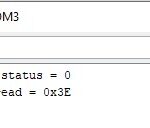Planting pepper seeds is a rewarding experience, offering the satisfaction of nurturing a plant from its earliest stages to bearing delicious fruit. At CONDUCT.EDU.VN, we provide a comprehensive guide to help you successfully grow peppers from seed, covering everything from seed selection to transplanting. Follow our expert tips and techniques to cultivate healthy pepper plants and enjoy a bountiful harvest. Discover the art of growing chili peppers, cultivating garden peppers, and understanding proper seed starting techniques for optimal results.
1. Best Time to Start Pepper Seeds
The ideal time to start your pepper seeds indoors is during the late winter or early spring months. Typically, January to March is a suitable window, depending on your local climate and the specific pepper variety. Starting early allows the seedlings ample time to develop before being transplanted outdoors. According to the University of Minnesota Extension, starting seeds 6-8 weeks before the last expected frost provides the best results.
- Climatic Considerations: Determine your region’s last frost date to time your seed starting appropriately.
- Variety-Specific Needs: Some pepper varieties may require a longer lead time, so research the specific needs of your chosen peppers.
- Indoor Environment: Ensure a consistent temperature and adequate light for optimal germination.
2. Choosing the Right Pepper Varieties
Selecting the right pepper varieties is crucial for a successful gardening experience. Different pepper types have varying germination times, temperature requirements, and levels of care. Consider factors such as climate, available space, and personal preferences when making your selections.
2.1. Easy-to-Grow Pepper Varieties
For beginners, certain pepper varieties are more forgiving and easier to cultivate. Capsicum annuum species, including jalapeños, bell peppers, and cayenne peppers, are known for their relatively quick germination times and adaptability to cooler climates.
- Jalapeños: Versatile and moderately spicy, jalapeños are great for beginners due to their resilience.
- Bell Peppers: Sweet and mild, bell peppers are popular for their ease of growth and various culinary uses.
- Cayenne Peppers: Known for their heat, cayenne peppers are relatively easy to grow and offer a rewarding harvest.
2.2. Challenging Pepper Varieties
For more experienced gardeners, Capsicum chinense species, such as habaneros and Scotch bonnets, offer unique flavors and heat levels. However, these varieties typically have slower germination times and require higher soil temperatures.
- Habaneros: Extremely hot and flavorful, habaneros need warm conditions and consistent care.
- Scotch Bonnets: Similar to habaneros in heat and flavor, Scotch bonnets also demand warm temperatures and patience.
- Ghost Peppers: One of the hottest peppers in the world, ghost peppers require optimal conditions and a long growing season.
2.3. Considerations for Germination Times
Understanding the germination times of different pepper varieties is essential for planning your planting schedule. While Capsicum annuum species may sprout within a week under ideal conditions, Capsicum chinense species can take several weeks to germinate.
| Pepper Variety | Species | Germination Time | Temperature Requirement |
|---|---|---|---|
| Jalapeño | Capsicum annuum | 7-10 days | 70-80°F |
| Bell Pepper | Capsicum annuum | 7-14 days | 70-80°F |
| Cayenne Pepper | Capsicum annuum | 7-14 days | 70-80°F |
| Habanero | Capsicum chinense | 14-28 days | 75-90°F |
| Scotch Bonnet | Capsicum chinense | 14-28 days | 75-90°F |
| Ghost Pepper | Capsicum chinense | 21-42 days | 75-90°F |
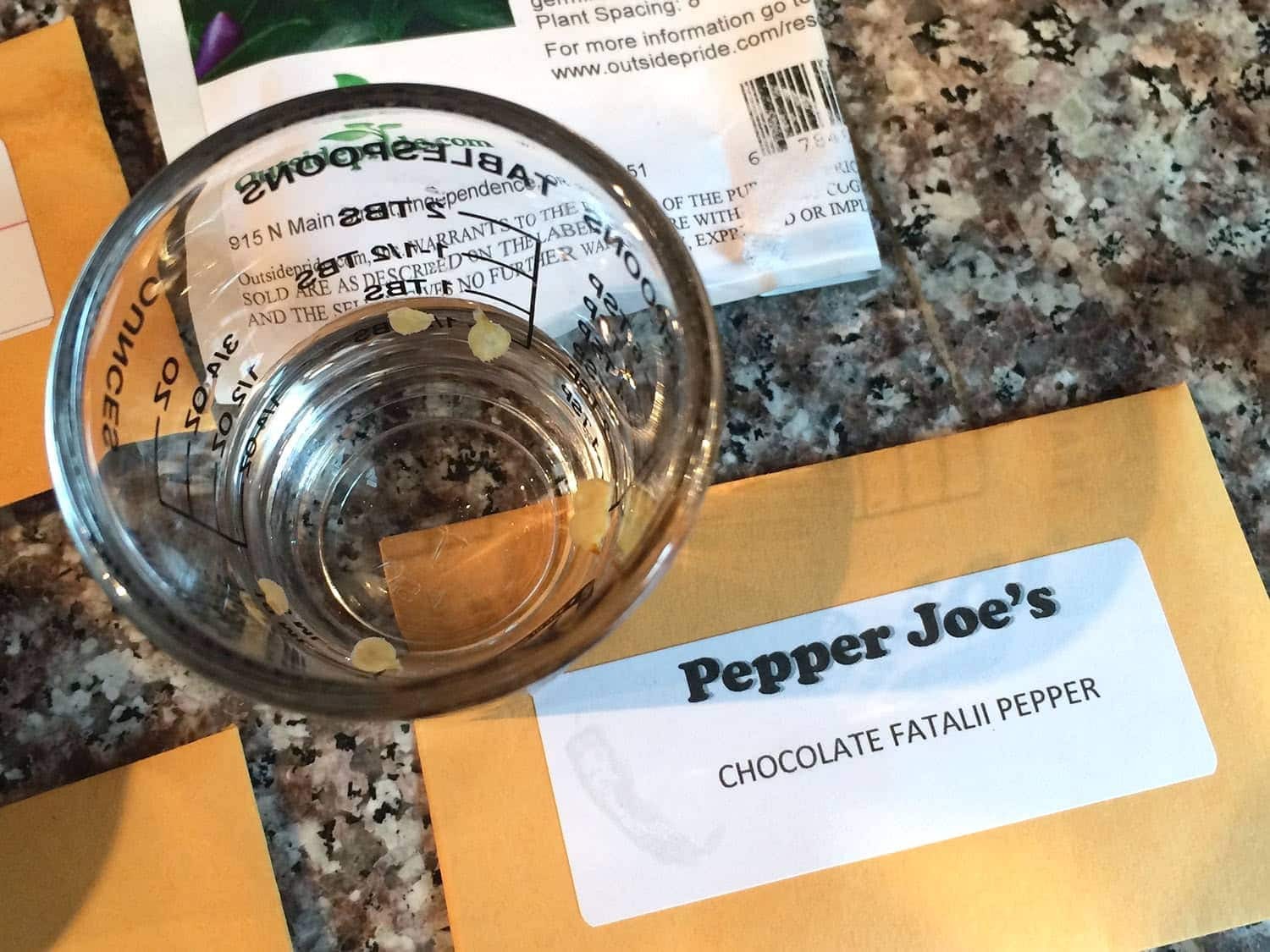

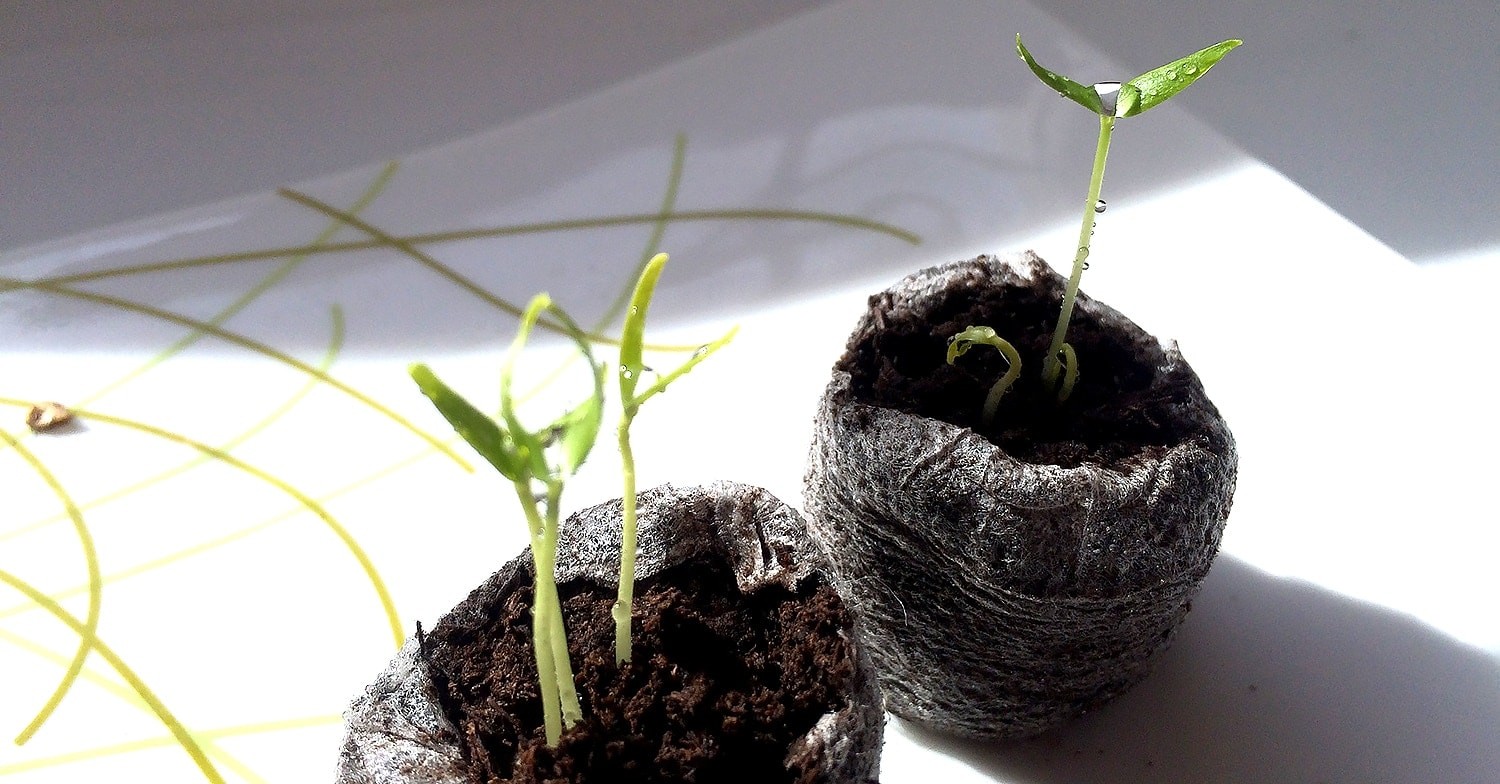
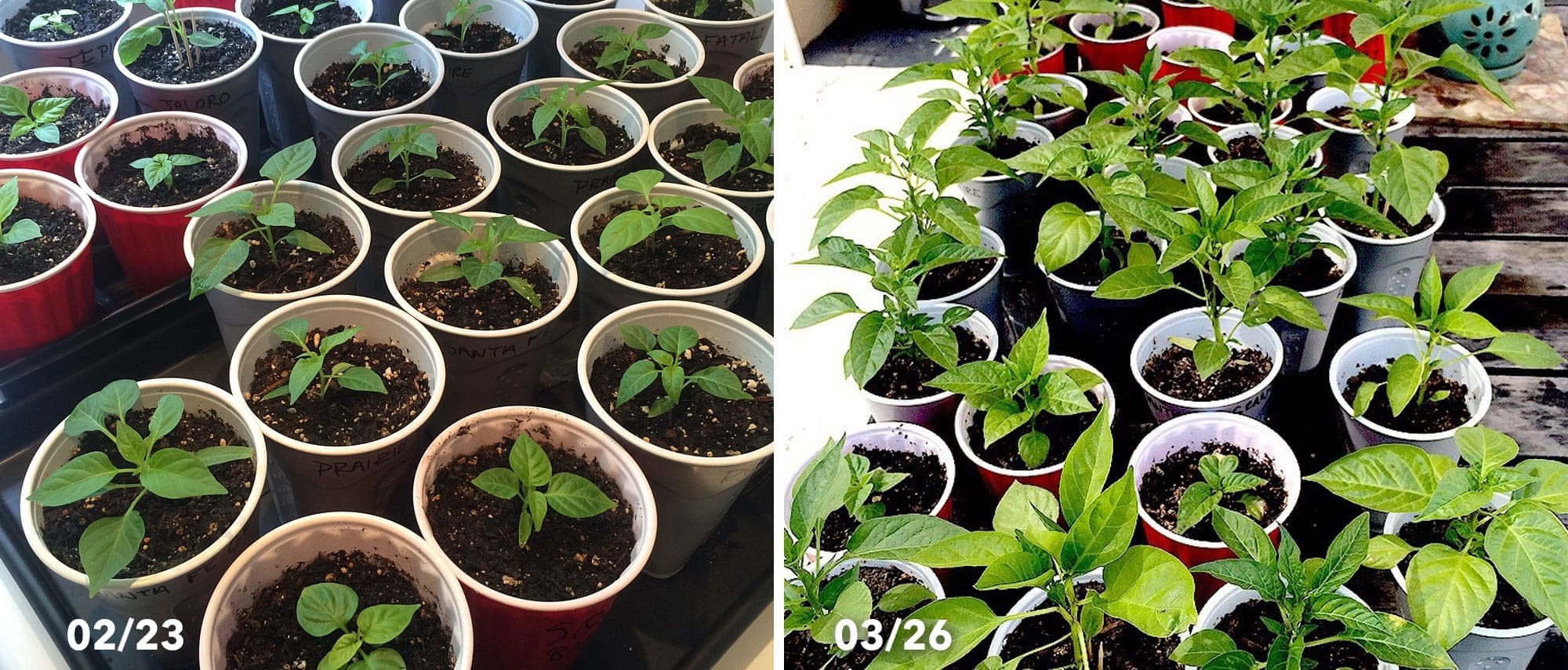
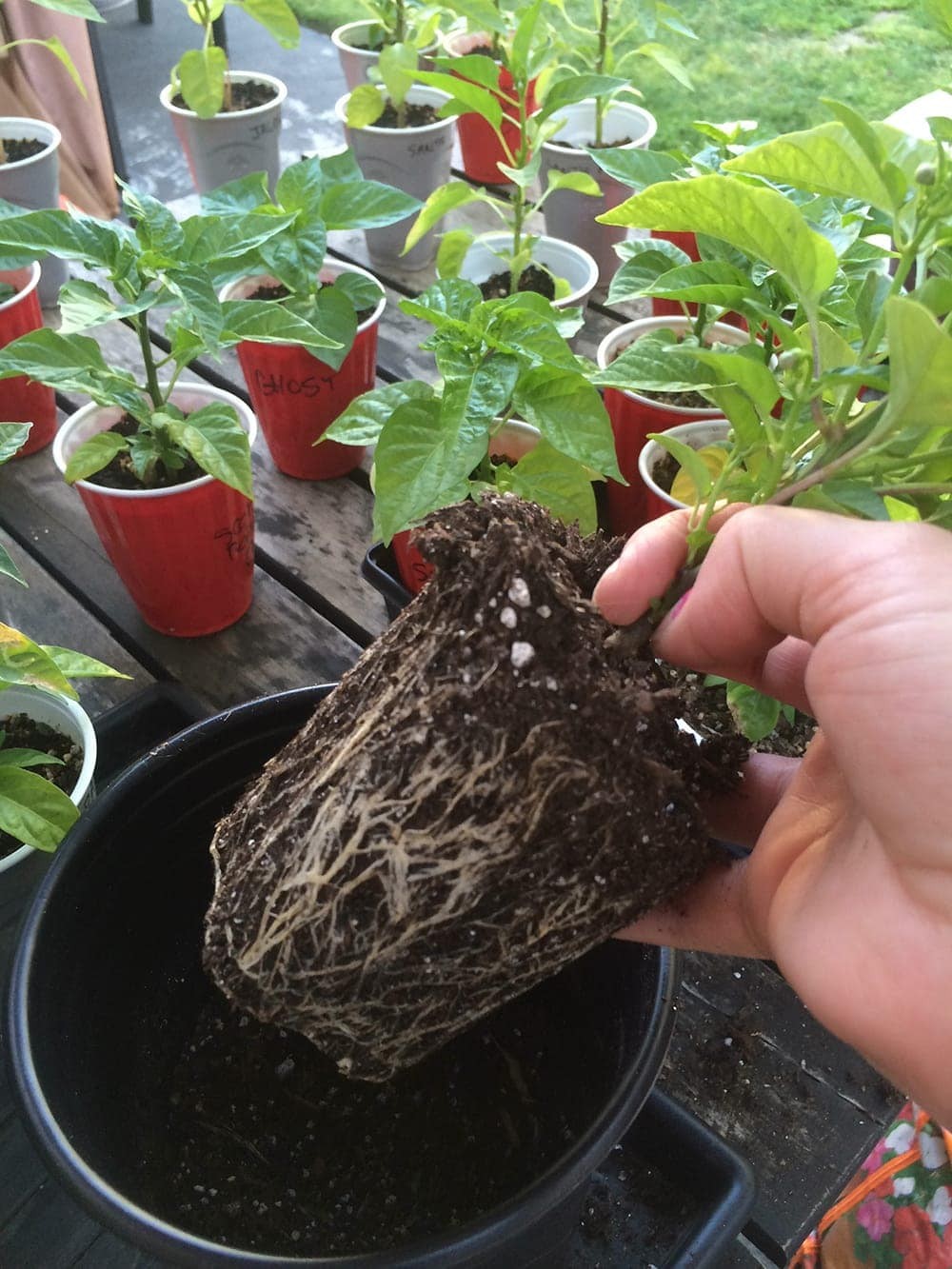
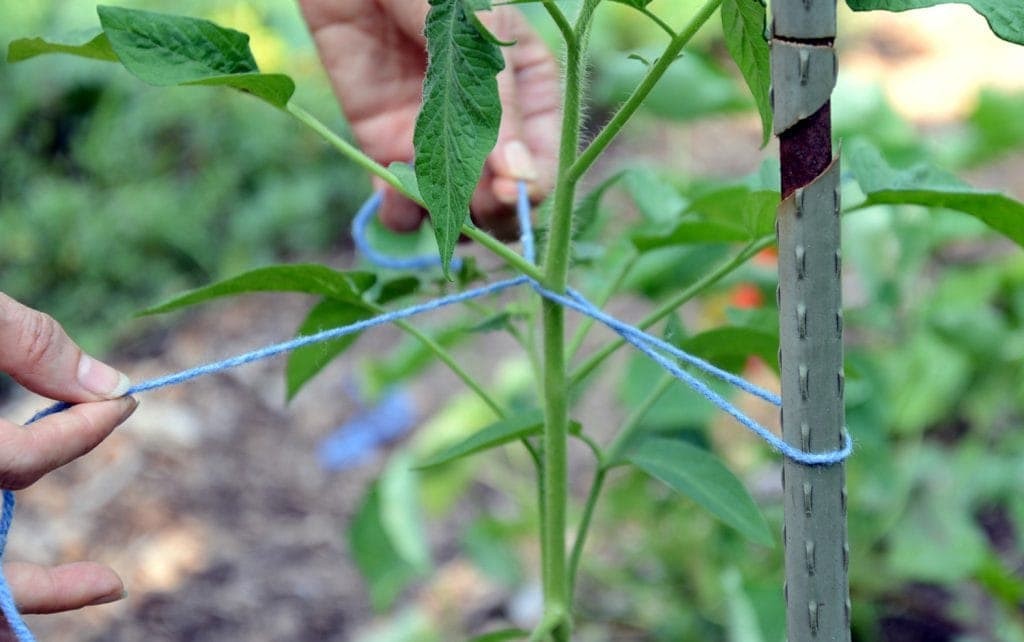
3. Obtaining Pepper Seeds
Securing high-quality pepper seeds is the first step toward a successful pepper-growing endeavor. You can obtain seeds from various sources, including local garden centers, online seed suppliers, and even from peppers purchased at your local supermarket.
3.1. Buying Seeds from Reputable Suppliers
Purchasing seeds from reputable suppliers ensures you receive viable seeds with accurate variety information. Look for suppliers with a proven track record and positive customer reviews. Some popular online seed suppliers include Baker Creek Heirloom Seeds and pepperjoe.com.
- Baker Creek Heirloom Seeds: Known for their wide selection of rare and heirloom varieties.
- pepperjoe.com: Specializes in hot pepper seeds and offers a variety of unique strains.
- Johnny’s Selected Seeds: Offers high-quality seeds and extensive growing information.
3.2. Saving Seeds from Store-Bought Peppers
Saving seeds from store-bought peppers can be an economical way to expand your pepper collection. However, keep in mind that hybrid peppers may not produce true-to-type offspring. To save seeds, simply extract them from the pepper, rinse them, and allow them to dry thoroughly before storing them in a cool, dry place.
- Select Open-Pollinated Varieties: Choose peppers labeled as open-pollinated to ensure the seeds will produce similar plants.
- Avoid Hybrid Varieties: Hybrid peppers (F1 hybrids) may not breed true, resulting in unpredictable outcomes.
- Proper Seed Drying: Dry the seeds thoroughly to prevent mold and ensure long-term viability.
4. Pre-Soaking Pepper Seeds for Better Germination
Before planting, soaking your pepper seeds overnight in warm water can significantly improve their germination rate. Soaking helps soften the seed coat and promotes faster sprouting.
4.1. Step-by-Step Soaking Instructions
- Place the seeds in a small glass or container.
- Add warm water, ensuring the seeds are fully submerged.
- Allow the seeds to soak for 12-24 hours.
- Drain the water and proceed with planting.
4.2. Benefits of Soaking
- Increased Germination Rate: Soaking softens the seed coat, making it easier for the seedling to emerge.
- Faster Sprouting: Hydrated seeds tend to sprout more quickly after planting.
- Improved Seedling Vigor: Soaking can lead to stronger and healthier seedlings.
Soaking pepper seeds in warm water overnight enhances germination rates, promoting faster and more vigorous sprouting.
5. Starting Seeds Indoors: A Step-by-Step Guide
Starting pepper seeds indoors provides a controlled environment, protecting them from harsh weather conditions and pests. Using Jiffy peat pellets or seed-starting soil in trays is a popular and effective method.
5.1. Choosing the Right Seed-Starting Medium
Select a high-quality seed-starting medium that provides adequate drainage and aeration. Jiffy peat pellets and seed-starting soil mixes are excellent choices.
- Jiffy Peat Pellets: Convenient and easy to use, Jiffy pellets expand when watered, providing a perfect environment for seed germination.
- Seed-Starting Soil Mix: A blend of peat moss, vermiculite, and perlite, seed-starting mixes offer excellent drainage and aeration.
- Avoid Garden Soil: Garden soil is too dense and can inhibit root growth in young seedlings.
5.2. Planting Seeds in Jiffy Peat Pellets
- Hydrate the peat pellets by adding water according to the package instructions.
- Once the pellets have fully expanded, pull back the mesh on top.
- Dig a shallow hole, about 1/4 inch deep, in the center of each pellet.
- Place 2-3 seeds in each hole.
- Lightly cover the seeds with soil, without packing it down.
5.3. Planting Seeds in Seed-Starting Trays
- Fill the seed-starting tray with seed-starting soil mix.
- Moisten the soil thoroughly.
- Create small indentations, about 1/4 inch deep, in each cell.
- Place 2-3 seeds in each indentation.
- Lightly cover the seeds with soil.
5.4. Creating the Ideal Germination Environment
Pepper seeds require warmth and moisture to germinate successfully. Using a seedling heat mat and a greenhouse dome can help create the ideal environment.
- Seedling Heat Mat: Provides consistent warmth to the soil, promoting faster germination.
- Greenhouse Dome: Traps moisture and warmth, creating a humid environment that encourages sprouting.
- Temperature Control: Maintain a soil temperature of 70-80°F for optimal germination.
Planting pepper seeds in well-prepared soil ensures they receive the necessary nutrients and support for initial growth.
6. Providing Light for Seedlings
Once the seeds have sprouted, providing adequate light is crucial for healthy seedling development. Insufficient light can result in leggy, weak seedlings.
6.1. Natural Sunlight vs. Grow Lights
While natural sunlight is beneficial, it may not be sufficient during the winter months. Supplementing with grow lights can ensure your seedlings receive the light they need.
- Natural Sunlight: Place seedlings near a well-lit window, ensuring they receive at least 6 hours of sunlight per day.
- Grow Lights: Use LED or fluorescent grow lights to provide consistent light, especially on cloudy days.
- Light Distance: Position the grow lights 6-8 inches above the seedlings to prevent burning.
6.2. Choosing the Right Grow Lights
Select grow lights that provide a full spectrum of light, mimicking natural sunlight. LED grow lights are energy-efficient and produce minimal heat.
- LED Grow Lights: Energy-efficient and long-lasting, LED grow lights provide a full spectrum of light.
- Fluorescent Grow Lights: A more affordable option, fluorescent grow lights also provide adequate light for seedlings.
- Light Spectrum: Look for grow lights with a color temperature of 6500K for optimal seedling growth.
7. Selecting the Strongest Seedlings
After the seeds sprout, it’s essential to select the strongest seedling in each pod or cell. This ensures that you’re nurturing the most vigorous plants.
7.1. Identifying the Strongest Sprouts
Look for seedlings with thick stems, healthy green leaves, and rapid growth. The strongest sprouts will typically outcompete the others in terms of size and overall vigor.
- Stem Thickness: A thick stem indicates a strong and healthy seedling.
- Leaf Color: Healthy green leaves are a sign of good nutrient uptake and photosynthetic activity.
- Growth Rate: Select seedlings that are growing quickly and consistently.
7.2. Thinning Seedlings
Once you’ve identified the strongest seedling, carefully trim the others at the soil line. Avoid pulling them out, as this can disturb the roots of the remaining seedling.
- Use Sharp Scissors: Use clean, sharp scissors to trim the unwanted seedlings.
- Cut at Soil Level: Cut the seedlings at the soil line to avoid disturbing the roots of the remaining plant.
- Avoid Pulling: Pulling can damage the roots of the strongest seedling.
Selecting and thinning seedlings ensures that only the strongest plants receive the necessary resources for optimal growth and development.
8. Transplanting Seedlings into Larger Containers
Once the seedlings have developed their first set of true leaves and are about 3 inches tall, it’s time to transplant them into larger containers. This provides them with more space and nutrients to continue growing.
8.1. Preparing the New Containers
Choose containers that are at least 4 inches in diameter and have drainage holes. Fill the containers with a high-quality potting mix.
- Container Size: Select containers that are large enough to accommodate the growing root system.
- Drainage Holes: Ensure the containers have drainage holes to prevent waterlogging.
- Potting Mix: Use a well-draining potting mix that is specifically formulated for containers.
8.2. Transplanting Procedure
- Gently remove the seedling from its original container.
- Carefully loosen the roots if they are tightly bound.
- Place the seedling in the new container, ensuring the top of the root ball is level with the soil surface.
- Fill the container with potting mix, gently patting it down.
- Water the seedling thoroughly.
8.3. Handling Seedlings in Peat Pots
If your seedlings are in peat pots, remove the entire peat pot mesh lining before transplanting. This allows the roots to grow freely into the surrounding soil.
- Remove Mesh Lining: Peat pot mesh can restrict root growth if not removed.
- Gentle Handling: Handle the seedlings with care to avoid damaging the delicate roots.
- Planting Depth: Plant the seedlings slightly deeper than they were in the original container to promote root growth.
9. Choosing the Right Potting Mix
Selecting the right potting mix is crucial for the health and growth of your pepper plants. Potting mix is specially formulated for use in containers, providing good drainage and airflow.
9.1. Potting Mix vs. Garden Soil
It’s important to distinguish between potting mix and garden soil. Potting mix is designed for containers, while garden soil is intended for in-ground planting.
- Potting Mix: Contains ingredients like peat moss, bark, and perlite to ensure good drainage and airflow.
- Garden Soil: Too dense for containers, garden soil can compact and inhibit root growth.
- Container Use: Always use potting mix when growing peppers in containers.
9.2. Recommended Potting Mix Brands
Look for high-quality potting mixes that are specifically formulated for vegetables or tomatoes. Kellogg Patio Plus is a popular choice.
- Kellogg Patio Plus: A premium outdoor potting mix that provides excellent drainage and nutrients.
- Miracle-Gro Potting Mix: A widely available and reliable potting mix for container gardening.
- FoxFarm Ocean Forest: A nutrient-rich potting mix that promotes strong plant growth.
10. Fertilizing Pepper Plants
Fertilizing is essential for providing pepper plants with the nutrients they need to thrive. After the seedlings have developed their first set of true leaves, start fertilizing with a diluted solution of fish emulsion or fish and kelp fertilizer.
10.1. Types of Fertilizer
Choose a fertilizer that is specifically formulated for vegetables or tomatoes. Fish emulsion and fish and kelp fertilizers are excellent organic options.
- Fish Emulsion: Provides a balanced source of nutrients and promotes strong growth.
- Fish and Kelp Fertilizer: Combines the benefits of fish emulsion with the added micronutrients from kelp.
- Balanced NPK Ratio: Look for fertilizers with a balanced nitrogen, phosphorus, and potassium (NPK) ratio.
10.2. Dilution and Application
Dilute the fertilizer according to the package instructions, typically using 1/4 strength for young seedlings. Water the plants with the diluted fertilizer solution every 1-2 weeks.
- Follow Instructions: Always follow the dilution instructions on the fertilizer package.
- Dilute for Seedlings: Use a diluted solution to avoid burning the delicate roots.
- Regular Application: Fertilize every 1-2 weeks to provide a consistent supply of nutrients.
10.3. Foliar Feeding with Epsom Salt
In addition to regular fertilization, foliar feeding with Epsom salt can provide pepper plants with magnesium, which is essential for healthy foliage.
- Magnesium Sulfate: Epsom salt is a source of magnesium, which promotes strong foliage and prevents yellowing leaves.
- Application: Mix 1 teaspoon of Epsom salt per gallon of water and spray the leaves and stems every other week.
- Avoid Additives: Use pure Epsom salt without any added scents or chemicals.
Providing adequate light, nutrients, and support helps pepper plants thrive and produce abundant fruit.
11. Hardening Off Pepper Plants
Before transplanting your pepper plants outdoors, it’s crucial to harden them off. This process gradually acclimates the plants to outdoor conditions, reducing the risk of shock.
11.1. What is Hardening Off?
Hardening off is the process of gradually exposing indoor-grown plants to outdoor conditions, such as sunlight, wind, and temperature fluctuations.
- Acclimation: Hardening off allows plants to gradually adjust to the stresses of outdoor environments.
- Reduced Shock: Properly hardened-off plants are less likely to experience transplant shock.
- Improved Survival Rate: Hardening off increases the chances of successful transplanting and long-term survival.
11.2. Hardening Off Schedule
Start the hardening-off process 2-3 weeks before you plan to transplant your pepper plants outdoors.
- Day 1: Place the plants outdoors in a shaded location for 1-2 hours.
- Days 2-3: Gradually increase the amount of sunlight and time spent outdoors.
- Days 4-7: Expose the plants to direct sunlight for several hours each day.
- Days 8-14: Leave the plants outdoors overnight, as long as there is no threat of frost.
11.3. Important Considerations
- Monitor Weather Conditions: Avoid hardening off plants during extreme weather conditions, such as high winds or heavy rain.
- Watering: Water the plants more frequently during the hardening-off process, as they will dry out faster outdoors.
- Protection: Protect the plants from pests and diseases during hardening off.
12. Transplanting Pepper Plants Outdoors
After hardening off, your pepper plants are ready to be transplanted into their permanent home. Choose a location that receives at least 6-8 hours of sunlight per day and has well-draining soil.
12.1. Timing the Transplant
Wait until the last frost date has passed and nighttime temperatures are consistently above 50°F before transplanting your pepper plants outdoors.
- Frost Risk: Transplanting before the last frost can damage or kill your pepper plants.
- Warm Soil: Peppers thrive in warm soil, so wait until the soil has warmed up before transplanting.
- Nighttime Temperatures: Consistent nighttime temperatures above 50°F are essential for successful transplanting.
12.2. Preparing the Planting Site
Prepare the planting site by amending the soil with compost or other organic matter. This will improve drainage and provide essential nutrients.
- Soil Amendment: Add compost or other organic matter to improve soil structure and fertility.
- Well-Draining Soil: Peppers require well-draining soil to prevent root rot.
- Sunlight: Choose a location that receives at least 6-8 hours of sunlight per day.
12.3. Transplanting Procedure
- Dig a hole that is slightly larger than the root ball of the pepper plant.
- Gently remove the plant from its container.
- Loosen the roots if they are tightly bound.
- Place the plant in the hole, ensuring the top of the root ball is level with the soil surface.
- Fill the hole with soil, gently patting it down.
- Water the plant thoroughly.
Transplanting pepper plants outdoors requires careful handling to minimize root disturbance and ensure successful establishment.
13. Ongoing Care for Pepper Plants
After transplanting, ongoing care is essential for maintaining healthy pepper plants and maximizing fruit production.
13.1. Watering
Water pepper plants regularly, especially during hot, dry weather. Allow the soil to dry slightly between waterings to prevent root rot.
- Consistent Moisture: Maintain consistent soil moisture, but avoid overwatering.
- Deep Watering: Water deeply to encourage strong root growth.
- Mulching: Apply a layer of mulch around the plants to conserve moisture and suppress weeds.
13.2. Fertilizing
Continue to fertilize pepper plants every 2-3 weeks with a balanced fertilizer. Avoid over-fertilizing, as this can lead to excessive foliage growth and reduced fruit production.
- Balanced Fertilizer: Use a balanced fertilizer with an NPK ratio of 10-10-10 or similar.
- Regular Application: Fertilize every 2-3 weeks during the growing season.
- Avoid Over-Fertilizing: Excessive fertilization can lead to lush foliage but fewer peppers.
13.3. Staking and Caging
Pepper plants, especially those with heavy fruit loads, may benefit from staking or caging to provide support.
- Staking: Insert a stake into the soil near the plant and tie the stem to the stake using soft twine.
- Caging: Place a tomato cage around the plant to provide support as it grows.
- Prevent Branch Breakage: Staking and caging can prevent branches from breaking under the weight of the peppers.
Providing support through staking or caging helps pepper plants withstand heavy fruit loads and prevents branch breakage.
14. Common Problems and Solutions
Even with the best care, pepper plants can sometimes encounter problems. Being able to identify and address these issues is crucial for maintaining healthy plants.
14.1. Leggy Seedlings
Leggy seedlings, characterized by stretched, skinny stems, are typically caused by insufficient light.
- Solution: Provide more light by moving the seedlings to a sunnier location or using grow lights.
- Grow Lights: Position grow lights 6-8 inches above the seedlings to provide adequate light.
- Pruning: Gently prune the tops of leggy seedlings to encourage bushier growth.
14.2. White Mold on Soil
White mold on the soil surface is often caused by excessive moisture.
- Solution: Allow the soil to dry out slightly between waterings. Improve air circulation by running a fan near the plants.
- Reduce Watering: Water less frequently to prevent excessive moisture buildup.
- Improve Air Circulation: A fan can help dry out the soil and prevent mold growth.
- Remove Mold: Scrape off the mold from the soil surface.
14.3. Gnats Around Plants
Gnats are attracted to moist soil and decaying organic matter.
- Solution: Allow the soil to dry out slightly. Use sticky traps to catch adult gnats.
- Vinegar Trap: Place a small dish of apple cider vinegar near the plants to trap gnats.
- Beneficial Nematodes: Apply beneficial nematodes to the soil to control gnat larvae.
15. Understanding Pepper Plant Diseases and Pests
Being aware of common pepper plant diseases and pests is essential for maintaining a healthy garden.
15.1. Common Diseases
- Bacterial Leaf Spot: Causes small, dark spots on leaves and can lead to defoliation.
- Control: Use copper-based fungicides and practice good sanitation.
- Fusarium Wilt: A soilborne fungus that causes wilting and death of plants.
- Control: Use disease-resistant varieties and practice crop rotation.
- Blossom-End Rot: Caused by calcium deficiency, resulting in dark, sunken spots on the bottom of peppers.
- Control: Ensure adequate calcium levels in the soil and consistent watering.
15.2. Common Pests
- Aphids: Small, sap-sucking insects that can weaken plants.
- Control: Use insecticidal soap or neem oil.
- Spider Mites: Tiny pests that cause yellowing and stippling of leaves.
- Control: Use miticides or strong blasts of water.
- Pepper Weevils: Small beetles that lay eggs in pepper pods, causing them to drop prematurely.
- Control: Use insecticides and remove infested pods.
16. Harvesting Pepper
Knowing when and how to harvest your peppers is essential to enjoying the fruits of your labor.
16.1. Determining Ripeness
Peppers are typically ready to harvest when they reach their mature color and size. The exact time will depend on the variety.
- Color: Most peppers change color as they ripen, from green to red, yellow, orange, or purple.
- Size: Peppers should reach their expected size for the variety.
- Firmness: Ripe peppers should be firm to the touch.
16.2. Harvesting Techniques
Use pruning shears or a sharp knife to cut the peppers from the plant, leaving a short stem attached.
- Pruning Shears: Use sharp pruning shears to make clean cuts.
- Sharp Knife: A sharp knife can also be used to harvest peppers.
- Short Stem: Leave a short stem attached to the pepper to prevent rot.
16.3. Post-Harvest Storage
Store harvested peppers in a cool, dry place. Peppers can also be frozen, dried, or pickled for long-term storage.
- Cool, Dry Place: Store peppers in a cool, dry place to prolong their shelf life.
- Freezing: Freeze peppers whole or sliced for later use.
- Drying: Dry peppers in a dehydrator or oven for long-term storage.
- Pickling: Pickle peppers in vinegar or brine for a tangy treat.
17. Seed Saving for Future Plantings
Saving seeds from your pepper plants can be a rewarding way to preserve your favorite varieties and ensure a continuous supply of seeds for future plantings.
17.1. Selecting Seed-Saving Candidates
Choose healthy, disease-free plants that produce desirable peppers.
- Healthy Plants: Select plants that are vigorous and free from diseases.
- Desirable Peppers: Choose peppers that have the characteristics you want to preserve.
- Open-Pollinated Varieties: Save seeds from open-pollinated varieties to ensure true-to-type offspring.
17.2. Seed Extraction and Drying
- Allow the peppers to fully ripen on the plant.
- Cut the peppers open and remove the seeds.
- Rinse the seeds to remove any pulp.
- Dry the seeds on a paper towel in a cool, dry place for 1-2 weeks.
17.3. Seed Storage
Store the dried seeds in an airtight container in a cool, dark place.
- Airtight Container: Use an airtight container to protect the seeds from moisture and pests.
- Cool, Dark Place: Store the seeds in a cool, dark place to prolong their viability.
- Labeling: Label the container with the variety and date of collection.
18. Innovative Techniques in Pepper Seed Planting
Exploring innovative techniques can enhance your pepper seed planting process and improve overall results.
18.1. Hydroponic Pepper Growing
Hydroponics involves growing plants without soil, using nutrient-rich water solutions.
- Nutrient Solutions: Use carefully balanced nutrient solutions to provide essential elements.
- Controlled Environment: Hydroponics allows for precise control over environmental factors.
- Faster Growth: Plants often grow faster in hydroponic systems due to optimal nutrient availability.
18.2. Aquaponic Pepper Growing
Aquaponics combines aquaculture (raising fish) and hydroponics, using fish waste to provide nutrients for the plants.
- Symbiotic System: Fish waste provides nutrients for the plants, while the plants filter the water for the fish.
- Sustainable: Aquaponics is a sustainable method of food production.
- Reduced Waste: Aquaponics reduces waste and maximizes resource utilization.
18.3. Using Rooting Hormones
Applying rooting hormones can stimulate root growth in seedlings.
- Faster Root Development: Rooting hormones promote faster and more extensive root development.
- Improved Transplant Success: Seedlings with well-developed roots are more likely to survive transplanting.
- Application: Apply rooting hormone powder or liquid to the roots during transplanting.
19. Maximizing Yields: Advanced Tips
For experienced growers, maximizing yields is a primary goal. Here are some advanced tips to help you achieve a bountiful pepper harvest.
19.1. Pruning Techniques
Pruning can help improve airflow, reduce disease risk, and encourage fruit production.
- Remove Suckers: Remove suckers (shoots that grow from the base of the plant) to redirect energy to fruit production.
- Improve Airflow: Prune inner branches to improve airflow and reduce humidity.
- Encourage Bushier Growth: Pinch off the growing tips to encourage bushier growth.
19.2. Companion Planting
Planting certain plants together can benefit each other.
- Basil: Repels aphids and spider mites.
- Marigolds: Repel nematodes and other soil pests.
- Onions: Repel aphids and other insects.
19.3. Soil Solarization
Soil solarization involves covering the soil with clear plastic to heat it up and kill soilborne pests and diseases.
- Heat Sterilization: Soil solarization uses heat to sterilize the soil.
- Pest and Disease Control: Kills soilborne pests and diseases.
- Weed Control: Reduces weed germination.
20. Exploring Pepper Plant Genetics and Breeding
Delving into pepper plant genetics and breeding can open up new possibilities for creating unique varieties and improving existing ones.
20.1. Understanding Pepper Genetics
Understanding the genetic makeup of pepper plants is crucial for successful breeding.
- Genes: Genes determine traits such as fruit color, size, and heat level.
- Cross-Pollination: Peppers can easily cross-pollinate, leading to new combinations of traits.
- Hybridization: Hybridization involves crossing two different varieties to create a new variety with desirable traits.
20.2. Basic Breeding Techniques
- Select two pepper plants with desirable traits.
- Isolate the plants to prevent unwanted cross-pollination.
- Hand-pollinate the flowers by transferring pollen from one plant to the other.
- Collect the seeds from the resulting peppers.
- Plant the seeds and evaluate the offspring.
20.3. Advanced Breeding Strategies
- Backcrossing: Crossing a hybrid back to one of its parents to stabilize desirable traits.
- Mutation Breeding: Inducing mutations in pepper plants to create new traits.
- Genetic Engineering: Modifying the genetic makeup of pepper plants to improve traits.
By following this comprehensive guide, you’ll be well-equipped to successfully plant pepper seeds and cultivate a thriving pepper garden. Remember to visit CONDUCT.EDU.VN for more detailed information, tips, and resources to help you on your gardening journey. We provide expert guidance and support to help you grow the best peppers possible. For further assistance, contact us at 100 Ethics Plaza, Guideline City, CA 90210, United States, Whatsapp: +1 (707) 555-1234 or visit our website at CONDUCT.EDU.VN. Start your pepper-growing adventure today and enjoy a bountiful harvest!
FAQ: Planting Pepper Seeds
Q1: How long does it take for pepper seeds to germinate?
A: Pepper seeds typically germinate in 7-21 days, depending on the variety and environmental conditions. Capsicum annuum species germinate faster than Capsicum chinense species.
Q2: What is the best temperature for germinating pepper seeds?
A: The ideal temperature for germinating pepper seeds is between 70-80°F (21-27°C). Using a seedling heat mat can help maintain consistent soil temperature.
Q3: Do I need to soak pepper seeds before planting?
A: Soaking pepper seeds in warm water for 12-24 hours before planting can improve germination rates by softening the seed coat.
Q4: What type of soil should I use for planting pepper seeds?
A: Use a well-draining seed-starting mix that is specifically formulated for starting seeds. Avoid using garden soil, as it can be too dense and inhibit root growth.
Q5: How deep should I plant pepper seeds?
A: Plant pepper seeds about 1/4 inch (0.6 cm) deep in the soil.
Q6: How much light do pepper seedlings need?
A: Pepper seedlings need at least 6-8 hours of light per day. If you don’t have enough natural light, use grow lights to supplement.
Q7: When should I transplant pepper seedlings into larger containers?
A: Transplant pepper seedlings into larger containers when they have developed their first set of true leaves and are about 3 inches (7.6 cm) tall.
Q8: How do I harden off pepper seedlings before transplanting them outdoors?
A: Gradually expose pepper seedlings to outdoor conditions over a period of 1-2 weeks, starting with 1-2 hours of shade and increasing the amount of sunlight and time spent outdoors each day.
Q9: When is the best time to transplant pepper plants outdoors?
A: Transplant pepper plants outdoors after the last frost date has passed and nighttime temperatures are consistently above 50°F (10°C).
Q10: What are some common problems when growing pepper plants from seed?
A: Common problems include leggy seedlings (caused by insufficient light), white mold on the soil (caused by excessive moisture), and gnats around the plants (attracted to moist soil). See the solutions above!
By following these guidelines, you can avoid many common pitfalls and enjoy a successful pepper-growing season. Remember, conduct.edu.vn is here to assist you with all your gardening needs. Contact us at 100 Ethics Plaza, Guideline City, CA 90210, United States, Whatsapp: +1 (707) 555-1234.
